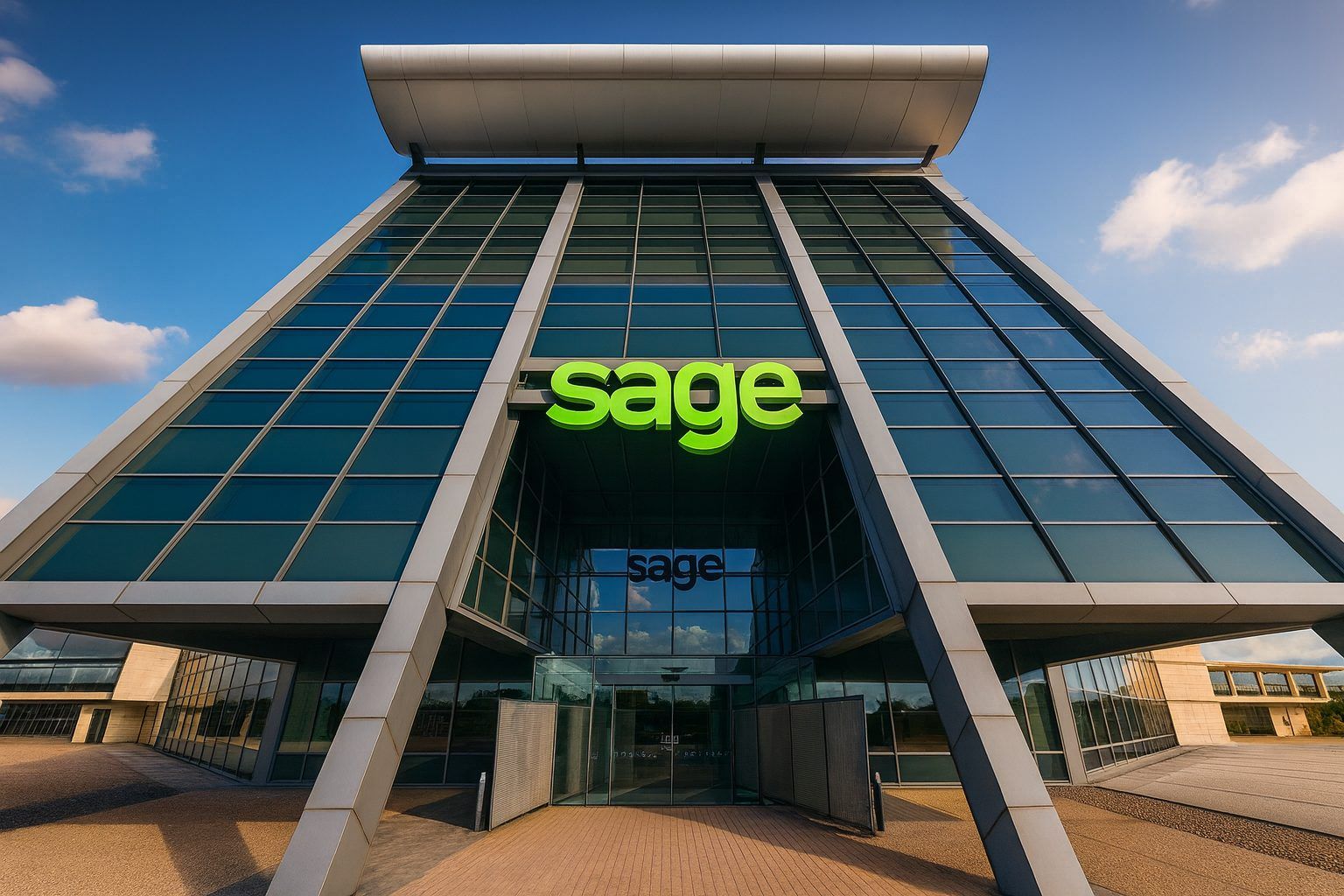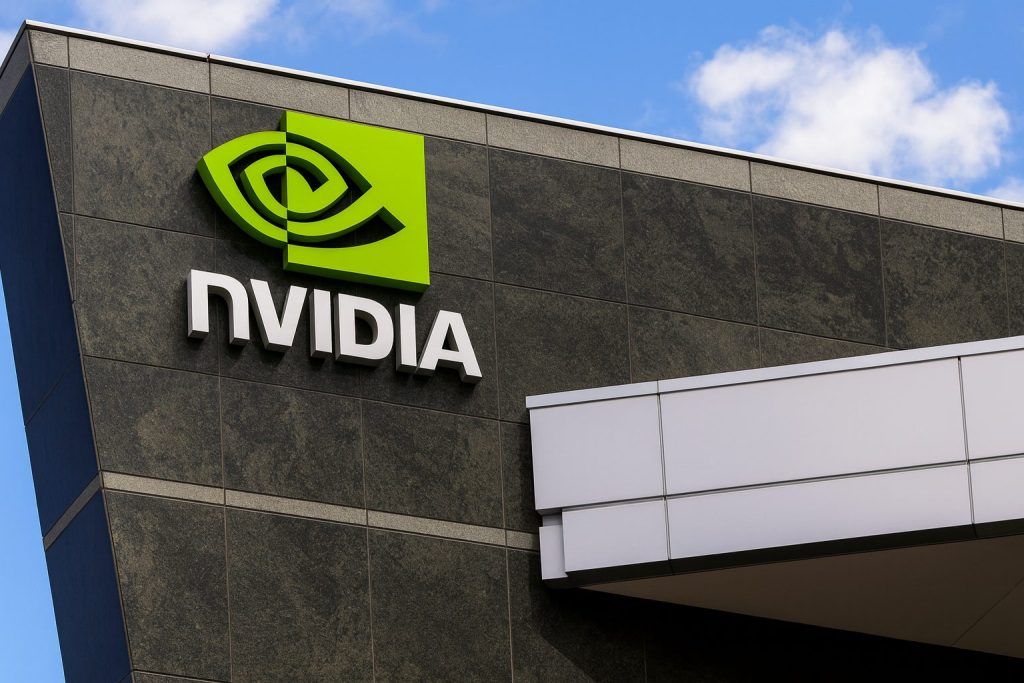On 27 November 2025, Sage Group plc (LON: SGE) is trading around 1,072p as the FTSE 100 software group steps up a new £300m share buyback following double‑digit FY25 growth, a higher dividend and an accelerating AI strategy.
Snapshot: Sage Group plc on 27 November 2025
As the London market closed on 27 November 2025, Sage Group plc (LON: SGE) finished the session with a sell price of about 1,072p and a buy price of 1,073p, up roughly 0.75% on the day. That leaves the FTSE 100 software group valued at around £10.2bn, with a dividend yield near 2.0% and a trailing P/E ratio of about 24–25 times earnings. [1]
Despite the recent bounce, Sage’s shares are still trading more than 20% below their 52‑week high of 1,349p, and only a few percentage points above the 12‑month low around 1,034.5p, suggesting room for sentiment to normalise if the fundamentals continue to deliver. [2]
Today’s trading comes against the backdrop of:
- Fresh FY25 results (published 19 November 2025) showing double‑digit growth in revenue, profit and earnings per share. [3]
- A newly approved £300m share buyback programme, already being executed in the market. [4]
- Ongoing AI‑driven product innovation, including Sage Copilot and new intelligent agents, highlighted in the full‑year presentation. [5]
Below is a full round‑up of the most relevant Sage Group news for 27 November 2025 and what it means for investors.
Today’s key headlines on Sage Group plc (27 November 2025)
1. Share price closes higher after recent pull‑back
- Closing level (27 Nov 2025): c. 1,072p (sell price), up ~0.75% vs the prior close of 1,064.5p. [6]
- 52‑week range: 1,034.5p – 1,349p. [7]
- Performance: 1‑month +9.1%, 6‑month +14.0%, 1‑year +18.8%, 5‑year +77.6%, underlining the stock’s long‑term compounding profile despite recent volatility. [8]
2. £300m buyback programme now firmly under way
Following board approval of a share buyback programme of up to £300m, scheduled to run until 19 March 2026, Sage has already reported several daily “Transaction in Own Shares” RNS announcements. [9]
So far (as of 27 November, based on RNS filings up to 26 November), Sage has bought back and will cancel approximately:
- 21 November 2025: 926,428 shares at an average price of about 1,071p. [10]
- 24 November 2025: 117,472 shares, VWAP roughly 1,089p. [11]
- 25 November 2025: 635,462 shares, VWAP roughly 1,084p. [12]
- 26 November 2025: 715,428 shares, VWAP about 1,067p. [13]
In total, that’s just under 2.4m shares repurchased in the last week at an average price a little above 1,070p, representing around £25–26m of capital — roughly 8–9% of the announced £300m programme. By comparison, Sage had about 963.5m exercisable voting rights at 31 October 2025, so the initial buybacks equate to just under 0.25% of the free‑floating voting share base. [14]
3. FY25 results: double‑digit growth, higher margins, bigger dividend
On 19 November 2025, Sage reported audited results for the year to 30 September 2025, delivering another year of strong execution: [15]
- Underlying total revenue: up 10% to £2,513m.
- Underlying operating profit: up 17% to £600m, with operating margin improving 150 bps to 23.9%.
- Underlying EBITDA: up 15% to £694m, margin 27.6%.
- Annualised recurring revenue (ARR): up 11% to £2,574m, with growth across all major regions.
- Underlying basic EPS: up 18% to 43.2p; statutory EPS also rose 18% to 37.7p.
- Underlying cash conversion: robust at 110%, underscoring the quality of Sage’s subscription‑heavy, recurring revenue model.
- Dividend: total FY25 dividend lifted 7% to 21.85p, including a proposed final dividend of 14.4p per share payable in February 2026 (subject to AGM approval).
At the same time, Sage announced the new £300m buyback, citing strong cash generation, a solid balance sheet (net debt/underlying EBITDA at 1.7x) and the board’s confidence in future growth. [16]
4. AI, cloud and acquisitions continue to reshape the portfolio
Sage’s FY25 update put heavy emphasis on AI‑enabled cloud software for small and mid‑sized businesses (SMBs): [17]
- Sage Business Cloud revenue grew 13% to £2,083m, with cloud‑native revenue up 23%.
- The company has scaled Sage Copilot, its AI assistant, across products including Sage Intacct, Sage X3, Sage Accounting and Sage 50, and started to roll out AI agents across its platform.
- Recent acquisitions such as ForceManager (now branded Sage Sales Management), Fyle (AI‑enabled expense management) and Criterion (HR/payroll) deepen Sage’s capabilities in CRM‑style sales productivity, spend management and workforce solutions.
Sage also continues to appear in broader industry research: a new Construction Management Software market report from ResearchAndMarkets, published 25 November 2025, lists The Sage Group plc among key global competitors alongside Autodesk, Oracle and Trimble, underscoring Sage’s relevance in vertical markets like construction. [18]
The £300m share buyback: what’s happening and why it matters
Programme terms and structure
According to the 19 November 2025 buyback announcement, Sage intends to repurchase up to £300m of its ordinary shares by 19 March 2026. The company has put non‑discretionary mandates in place with J.P. Morgan Securities plc and Morgan Stanley & Co. International plc, which will execute the buyback as riskless principals, making trading decisions independently within pre‑set parameters. All shares repurchased are being cancelled, reducing the company’s outstanding share count. [19]
The RNS also notes that the buyback is being carried out under existing shareholder authorities and in accordance with UK listing rules and market abuse regulations, ensuring compliance with volume and price limits typical of such programmes. [20]
Progress so far
The series of RNS releases since 21 November show a disciplined pattern of buying across market trading sessions, with prices generally between c. 1,050p and 1,095p. [21]
While the £25–26m deployed so far is only a small fraction of the total programme, cancelling roughly 0.25% of exercisable voting shares this early in the window signals that Sage is serious about using surplus capital to enhance earnings per share (EPS) and support the share price, especially after a period of share price consolidation. [22]
FY25 results in detail: a high‑quality growth story
Revenue and margins
Sage’s FY25 numbers show a business in the classic “SaaS sweet spot”: solid mid‑single to low‑double‑digit top‑line growth combined with expanding margins.
Key metrics: [23]
- Underlying total revenue: £2,513m (+10%; +9% organic).
- Underlying operating profit: £600m (+17%), with margin up to 23.9%.
- Underlying EBITDA margin:27.6% (+120 bps).
- ARR: £2,574m (+11%), driven by balanced growth from new and existing customers.
- Subscription penetration: 83% (vs 82% in FY24).
The combination of recurring subscription revenues, rising margins and triple‑digit cash conversion (110%) gives Sage significant firepower for investment and shareholder returns — exactly what we’re now seeing via increased M&A, a higher dividend and a larger buyback. [24]
Balance sheet and capital allocation
Despite stepping up investment and buybacks, Sage maintains a moderate leverage profile:
- Net debt: around £1.19bn at 30 September 2025, with £1.02bn of cash and available liquidity. [25]
- Net debt / underlying EBITDA: about 1.7x, within management’s medium‑term target range of 1–2x. [26]
- The group’s RCF of £630m remains undrawn and Sage holds a BBB+ investment‑grade rating from S&P, providing flexibility for future expansion. [27]
In other words, Sage appears to be returning cash from a position of strength, not stretching the balance sheet to fund shareholder distributions.
AI, cloud and thought leadership: strategic positioning
Sage has clearly pivoted from being “just” an accounting software vendor to an AI‑enabled platform for SMB finance, HR and payroll. Management’s commentary highlights several strategic themes: [28]
- AI at scale:
- Sage Copilot is being embedded into key products, helping customers automate workflows, surface insights and handle routine tasks more efficiently.
- The company is rolling out specialised AI agents across its platform to tackle tasks like cash‑flow forecasting, invoice processing and anomaly detection.
- Vertical and regional depth:
- Acquisitions like ForceManager and Fyle add more functionality for sales teams and expense management, while Criterion enhances Sage’s mid‑market HR and payroll capabilities.
- Sage continues to be recognised in third‑party research (for instance, as a key construction management software provider), which supports its credibility in targeted verticals. [29]
- Content and customer engagement:
- On the customer‑facing side, Sage keeps publishing practical guidance via its Sage Advice blogs in multiple languages, including new Spanish‑language articles today on retaining customers after Black Friday and on complying with Spain’s VeriFactu e‑invoicing rules when billing from Excel. [30]
- While these blogs don’t move the share price, they support Sage’s positioning as a trusted advisor to SMBs, strengthening long‑term customer relationships.
How the market currently views Sage Group plc
Valuation and price targets
On today’s closing price of roughly 1,072p, Sage trades on: [31]
- A trailing P/E multiple of about 24–25x, based on FY25 adjusted EPS of 43.2p.
- A dividend yield of around 2.0%, with the dividend growing at roughly 7% year‑on‑year.
Independent valuation platform AlphaSpread estimates Sage’s intrinsic value at around 1,296p per share, about 18% above the current market price, using a blend of discounted cash flow and relative valuation methods. [32]
The same site collates Wall Street analyst forecasts, showing an average 12‑month price target of about 1,381p, implying close to 30% potential upside, with target prices ranging roughly from 1,060p to 1,680p. [33]
Meanwhile, a recent TipRanks update – published alongside the latest buyback RNS – notes that the most recent analyst rating is “Buy” with a £15.00 price target, and its AI “Spark” model rates Sage as “Outperform” with a stock score of 78/100, citing strong earnings, AI and cloud investment, and resilience in a tougher macro backdrop.
Technical picture and performance
Data from Hargreaves Lansdown and AlphaSpread together paint a nuanced picture: [34]
- Short‑term: The share has risen about 9% over the last month, recovering from recent weakness.
- Medium‑term: Over six months, Sage is up around 14%, slightly ahead of many UK large‑cap peers.
- Long‑term: Over five and ten years, Sage has delivered share price gains approaching 80–120%, reflecting compounding earnings and a resilient subscription business model.
- Volatility: Over the last year, the share price is still down close to 20% from its peak, which explains why the board is comfortable repurchasing stock at today’s levels. [35]
What all this means for investors (not investment advice)
For investors following Sage Group plc today, 27 November 2025, a few themes stand out:
- Fundamentals are strong and improving
Double‑digit growth in revenue, profit, ARR and EPS, together with expanding margins and robust cash conversion, suggest a healthy, scalable SaaS‑style business, not a mature, ex‑growth incumbent. [36] - Capital returns are stepping up
A 7% dividend increase plus a new £300m buyback is a powerful signal that management believes the shares represent good value and that free cash flow is comfortably ahead of internal investment needs. [37] - AI and cloud strategy is central to the investment case
Sage’s AI‑driven roadmap – Copilot, AI agents, and vertical solutions – is about deepening customer stickiness and expanding wallet share, not just buzzwords. Evidence from the FY25 presentation and recent acquisitions supports this strategic pivot. [38] - Valuation is not “cheap”, but arguably reasonable
A mid‑20s P/E multiple and 2% yield are not bargain levels in absolute terms, but third‑party analyses suggesting high‑teens undervaluation and ~30% upside on average analyst targets indicate that the market may still be under‑pricing Sage’s growth and cash‑return profile. [39] - Key risks remain
Investors should also keep in mind:- Execution risk in integrating acquisitions and scaling AI features.
- Competitive pressures from global players like Intuit, Xero and large ERP vendors.
- Macroeconomic headwinds for SMB customers, which could impact new sales or upsell activity. [40]
References
1. www.hl.co.uk, 2. www.hl.co.uk, 3. www.sage.com, 4. www.research-tree.com, 5. www.sage.com, 6. www.hl.co.uk, 7. www.hl.co.uk, 8. www.hl.co.uk, 9. www.research-tree.com, 10. www.tradingview.com, 11. www.investegate.co.uk, 12. www.tradingview.com, 13. www.tradingview.com, 14. www.sharesmagazine.co.uk, 15. www.sage.com, 16. www.sage.com, 17. www.sage.com, 18. www.globenewswire.com, 19. www.research-tree.com, 20. www.research-tree.com, 21. www.tradingview.com, 22. www.sharesmagazine.co.uk, 23. www.sage.com, 24. www.sage.com, 25. www.directorstalkinterviews.com, 26. www.sage.com, 27. www.directorstalkinterviews.com, 28. www.sage.com, 29. www.globenewswire.com, 30. www.sage.com, 31. www.hl.co.uk, 32. www.alphaspread.com, 33. www.alphaspread.com, 34. www.hl.co.uk, 35. www.hl.co.uk, 36. www.sage.com, 37. www.sage.com, 38. www.sage.com, 39. www.alphaspread.com, 40. www.globenewswire.com










